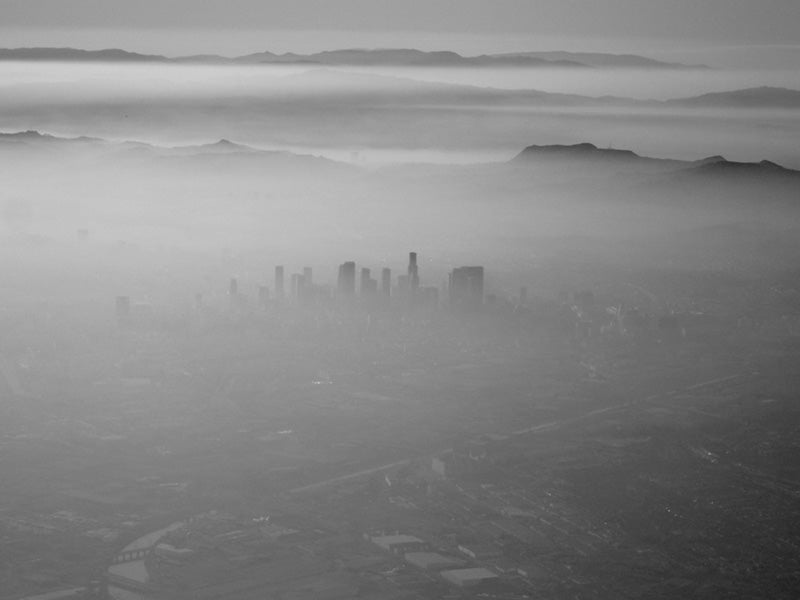California: A Terrible Place To Breathe
The Golden State claimed all five of the top slots for the highest air pollution in the American Lung Association's 2014 State of the Air Report.

This page was published 11 years ago. Find the latest on Earthjustice’s work.
California cities top an unfortunate list—the nation’s worst places to breathe. The Golden State claimed all five of the top slots for the highest air pollution in the American Lung Association’s 2014 State of the Air Report. Sadly, the report was nothing new. Los Angeles, and cities in the San Joaquin Valley like Bakersfield and Fresno, have been in the top five since the ALA started its annual reporting in 2000.
Of particular concern is the continuing problem of fine particle pollution in these cities. Fine particle pollution consists of tiny, dirty motes—less than 1/30 the width of a human hair—that come from sources like diesel exhaust, agricultural activities, and burning wood or fossil fuels. These particles can be easily inhaled deep into the lungs and even absorbed into the bloodstream where they can cause a host of negative health impacts, including heart and lung disease, and asthma. So these areas aren’t just the nation’s most polluted, they are also some of the unhealthiest.
Bakersfield, for example, with a population of 852,000, has a reported 168,000 cardiovascular cases as of 2013. That’s one in five people that suffer from heart ailments. Fresno has an even worse rate, closer to 1 in 4 suffering from cardiovascular problems.
These areas have particularly high particle pollution in part because of geography—surrounding mountains trap particles in place—and in part because they have a lot of pollution sources: lots of cars and trucks, dirty industry, and industrial-scale agriculture.
And while regulation over the years has helped decrease fine particle pollution by limiting the emissions from polluting industries and automobiles, Los Angeles and the San Joaquin Valley continue to exceed the fine particle pollution limits set by the Environmental Protection Agency.
The Clean Air Act should fix the air pollution problems in these areas. The law includes strict deadlines for areas to come into compliance with national air quality standards. When areas fail to meet those deadlines, EPA and the states are supposed to implement increasingly protective measures to clean up the air.
For the San Joaquin Valley and the Los Angeles area, where the air has been the dirtiest the longest, the Clean Air Act now requires the most stringent measures be put in place. These measures include stricter timelines for compliance and a push for better control technologies to be used to curb air pollution.
Unfortunately, EPA and the state and local air agencies have consistently looked for ways to avoid the strict requirements of the Clean Air Act. The result has been a string of missed deadlines, failed clean-up plans, and court orders demanding agency action. Most recently, the EPA has dropped the ball in getting these regions to comply with the Clean Air Act’s deadlines to put stringent control measures in place.
The result will again be more delay, more litigation, and most importantly more top rankings for California cities as the unhealthiest places to live.
Earthjustice and its clients Medical Advocates for Health Air, Physicians for Social Responsibility-Los Angeles, Citizens for Clean Air, WildEarth Guardians, and the Sierra Club, are trying to help move things forward. We’ve recently filed a legal challenge to EPA’s decision to slow the pace of progress on cleaning up fine particle pollution.
California is exceptional in so many ways. Our ranking for filthy air should not be one of them.
This op-ed first appeared in the San Francisco Examiner.
The California Regional Office fights for the rights of all to a healthy environment regardless of where in the state they live; we fight to protect the magnificent natural spaces and wildlife found in California; and we fight to transition California to a zero-emissions future where cars, trucks, buildings, and power plants run on clean energy, not fossil fuels.